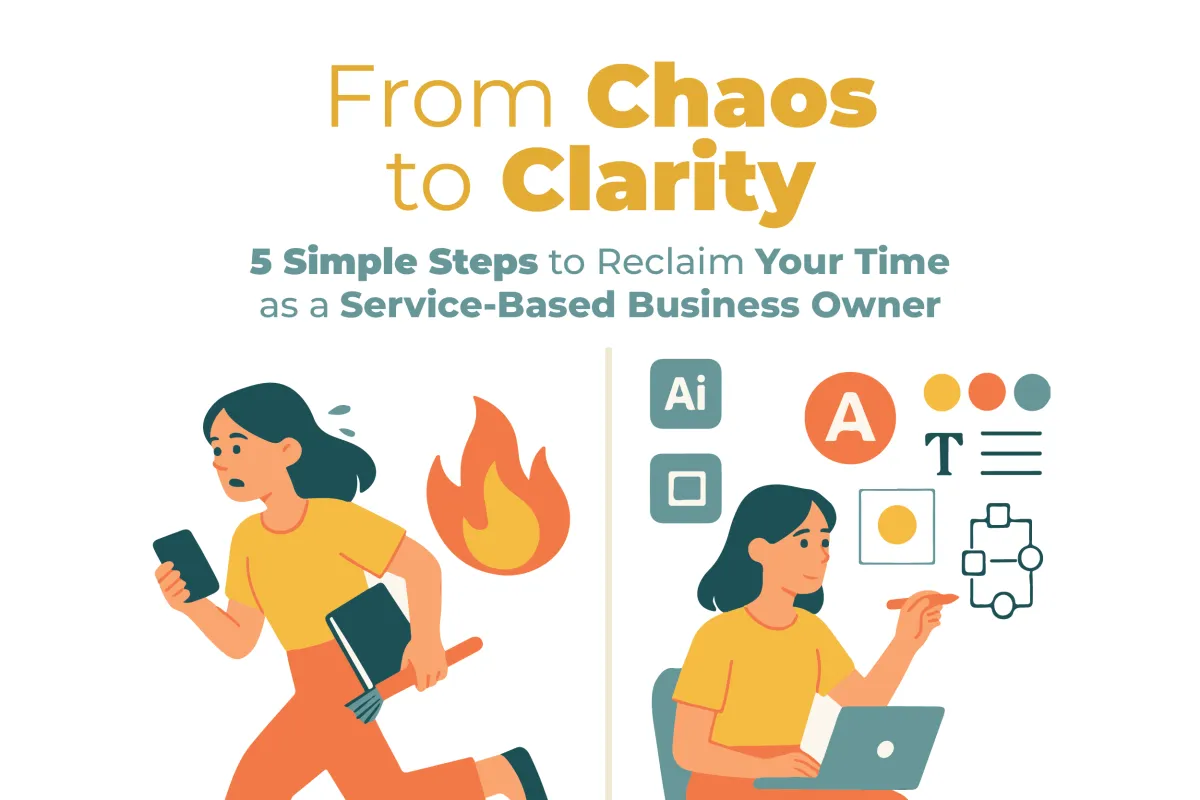
The Napkin System: How to Systemize Your Small Business Without Expensive Software
Let’s Demystify “Business Systems”
If the word "systems" makes you picture complex software, flowcharts, and a steep learning curve—you’re not alone. Many small business owners assume systems are for big corporations or tech-savvy teams.
Here’s the truth: Your first business system can start on the back of a napkin.
No fancy tools. No expensive platforms. Just a repeatable way of doing something important in your business.
In this guide, you’ll learn exactly how to create business systems for small business—starting with a simple checklist. By the end, you’ll have built your first system, felt the power of clarity, and taken a real step toward a business that doesn’t depend entirely on you.
The Napkin System: How to Systemize Your Small Business Without Expensive Software
Let’s Demystify “Business Systems”
What Really is a Business System?
Why Your Small Business Needs Systems
How to Build Your First System in 3 Simple Steps
2. Document the Steps Like a Checklist
3. Digitalize It Using Free Tools
Real-World Example: A "New Client Onboarding" System
What Really is a Business System?
Let’s bust the biggest myth first: a system is not a software.
Think of it this way:
A business system is like a recipe.
You don’t need a commercial kitchen to make great food—you need ingredients, steps, and a consistent outcome.
A system is:
An agreed-upon, repeatable way to get a predictable result
Written down so others (or future you) can follow it
Designed to save time, reduce errors, and increase consistency
A system is NOT:
A tool you pay $100/month for
A complicated chart no one uses
Something you “do later when you’re bigger”
If it helps you and your team get results without reinventing the wheel every time—that’s a business system.
Why Your Small Business Needs Systems
As a founder, you’re likely the glue holding everything together. That works—until it doesn’t.
Well-designed systems:
Free up your time by making tasks easier to delegate
Reduce decision fatigue because you no longer have to explain everything twice
Create consistency in how clients are served
Support scalability so your business can grow without breaking under pressure
Systems are the foundation of effective delegation.
Without systems, you’re stuck repeating yourself, fixing mistakes, and being the only person who knows how things get done.
How to Build Your First System in 3 Simple Steps
Let’s break this down. Here’s how to create your first business system with zero overwhelm.
1. Choose ONE Repetitive Task
Pick something you do more than twice a week. Examples:
Onboarding a new client
Sending monthly invoices
Publishing a podcast episode
Processing a refund
2. Document the Steps Like a Checklist
Take 15–20 minutes and write down the exact steps you follow. Don’t overthink it.
Example: New Client Welcome Email
Open welcome email template in Gmail drafts
Customize client name and start date
Attach onboarding PDF
Send email and archive
This is what’s called a simple process documentation.
3. Digitalize It Using Free Tools
Now that your system is written, put it somewhere accessible:
Google Docs or Google Sheets
Trello or ClickUp (free versions)
Notion
Wondering what are free business process tools? Start with the ones you already use! Google Docs + Trello = powerful and free.
Real-World Example: A "New Client Onboarding" System
Let’s put this into action with a common small business task: onboarding a new client.
Step 1: Choose the task – Client onboarding
Step 2: Write the checklist:
Send welcome email + contract
Add client info to CRM or spreadsheet
Schedule kickoff call
Share onboarding materials (guide, FAQ, etc.)
Introduce point of contact or account manager
Step 3: Digitalize it:
Paste into a Trello card titled “Client Onboarding”
Create a checklist inside the card
Share it with your VA or team
This becomes a repeatable system that anyone can follow—even if you're out of office.
From a Checklist to a Professional "SOP"
What you just created is a Standard Operating Procedure (SOP).
So when someone asks, what is a Standard Operating Procedure (SOP)?—you can say:
It’s a simple document that outlines the exact steps to complete a business task consistently.
Principles of Effective Documentation
Want to keep improving your systems? Keep these best practices in mind:
Focus on high-value tasks: Prioritize systems that save time or improve client delivery
Keep it short: Trigger > 6–8 steps > clear outcome
Choose the right format: Text, checklist, screen recording—whatever’s easiest to follow
Make it accessible: Store it where the work happens (inside your project tool, CRM, or shared folder)
The goal is not to build a manual no one reads—it’s to create clarity and consistency.
Here’s what you now know:
Systems don’t require expensive software
You already have repeatable processes—you just need to write them down
Simple checklists are powerful tools
That checklist is your first SOP
Every system you create moves you one step closer to a business that runs without constant supervision.
Ready to build your first real system?
To give you a head start, I've created a simple but powerful One-Page Simple System Template—the exact format I use with my clients to map out any key task in under 15 minutes.
➡️ Click here to Download it for free and turn chaos into clarity today. ⬅️
